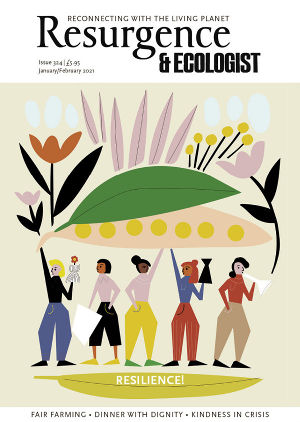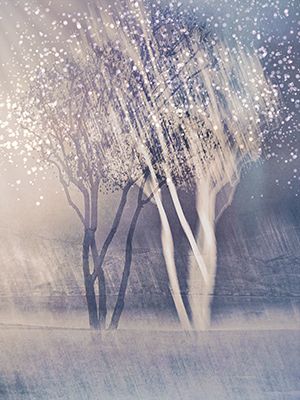My youngest son, Stellan, has always been a Romantic.
To feel summer, he is the one who unties his shoes and walks barefoot on spring grass and sandy beaches. To feel autumn, he is the one who removes his shirt to let rain fill the contours of his face and run down his back. To feel winter, he is the one whose face is the first to light up at the crackle of the first autumn fire.
“I looooove winter,” he says, taking a seat next to me in front of the fire, transfixed by the spectacle as if we ourselves had invented it. He is 17 now, but his excitement at every seasonal turn reminds me of Christmas mornings when he and his older brother and sister were little.
“Some people find the season hard,” I say, sipping tea. “But isn’t it a matter of perspective? Winter can be a hushed time of firelight and candlelight…” My voice trails off as I look ahead to icicles, frost, and long shadows. “It can be a time for clarity – to see structure and bones in trees and gardens. To feel more comfort in shadows.”
“To find light in the dark,” Stellan adds.
I explain to him the traditional Japanese calendar of 72 poetic microseasons, or kō – one every five days – rather than our four rather chunky seasons. These offer brief poetic journeys through the year – first frost, bears start to hibernate, camellias bloom, rainbows hide, deer lose antlers, pheasants start to call, first lotus blooms, hawks start to fly.
We talk about winter in the garden, a time when trees let go of their leaf canopies, and flowers turn to bare brown stalks. Our culture conveys the sense that winter is like a collective breath-holding, but it needn’t be that way. An old Jimmy Buffett song goes, “Changes in latitudes, changes in attitudes.” In 1993, when I moved from Mediterranean San Francisco (latitude 37.7749) to grey Seattle (latitude 47.6080), it was my first big lesson in the benefits of looking closer at the natural world for hope and the return of light. “It changed daily but was discernible weekly,” I say. Now living in Devon (latitude 50.7184), our winter days of light may be shorter, but they are luminescent in our minds.
“Because we bring the light in,” Stellan says.
“That’s right, but we can bring light outside, too.”
I tell my children this, yes. It is also a part of my mantra as a writer and designer. Begin with vision. Work with what you have, using light to define living architecture. String lights around trunks and branches of trees. String twinkly lights into a rose arbour you walk under. Set hurricane lanterns in strategic places in the garden so their dancing shadows stir your soul when you look up. Set time aside to intentionally watch how shadows from the low winter sun differ from high summer sun shadows.
Think about scent. My mantra as a writer and garden designer also says that entrances should entrance. Plant the hardy compact evergreen shrub Daphne odora ‘Aureomarginata’ near your front or back door. As you come and go, inhale its heady perfume. When mine bloom, I take careful cuttings for indoor flower arrangements. Branch out, as it were, and plant new bulbs in pots that you can move around the garden each year. Half the fun is the research and dreaming of the new colours, petals, fragrances and heights coming to your garden. Their quiet underground growth through the cold months will make you hum with hope. Watching them grow is a great way to mark the passing of time.
“What are those trees I love to touch?” Stellan reminds me as the fire warms us.
He is thinking of winter texture. Winter bark creates beautiful focal points. White birches bring a ghostly presence to gardens. Betula utilis ‘Jaquemontii’ is an elegant tree for lighting up as well. Tibetan cherry trees have silky burgundy bark. I call Chinese paperbark maple, Acer griseum, the pet woolly mammoths of the garden. And the colour of Cornus sanguinea ‘Winter Flame’ is as bright as a red fire engine.
My three children were raised going to public gardens in all seasons. Between the leaves falling in November and the emergence of snowdrops in late January – just three short months – it is vital for our spirits to visit winter landscapes. Walking with others in gardens benefits our minds and bodies.
During this short period while the garden trowel rests, pick up a pen. Winter is a serene time to begin a journal inspired by the search for illumination. You may find you are traversing inner and outer landscapes like the double helix of good travel and Nature writing. Writing is thinking. And it may lead us to discover new perspectives.
“To find light in the dark,” in the words of Stellan.








